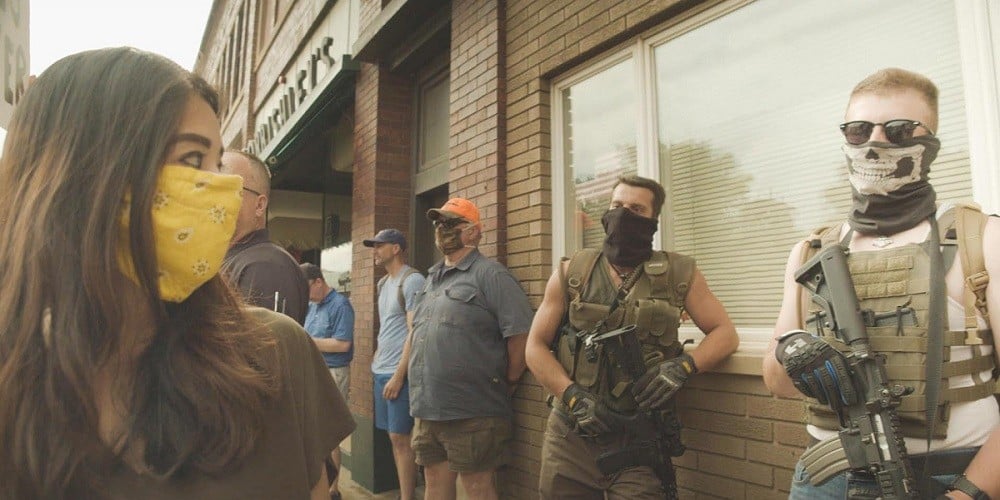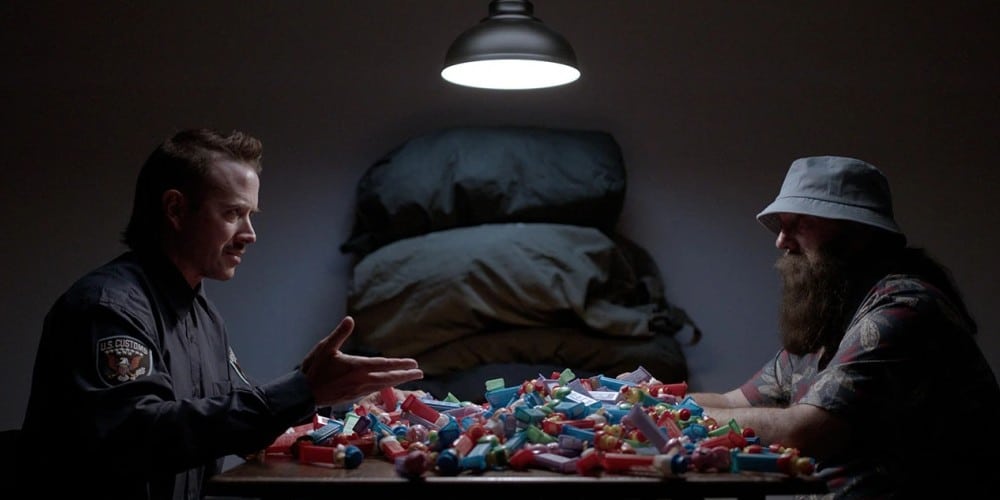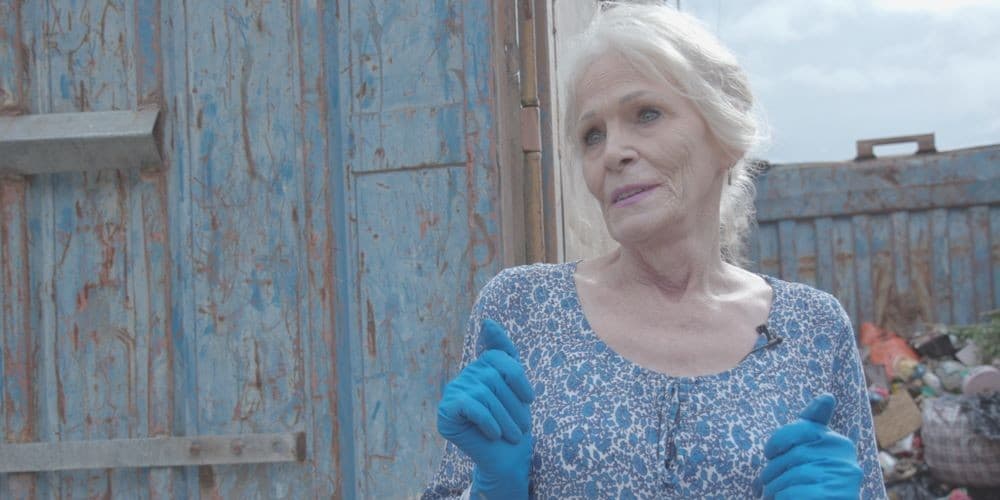Read also:
How to Watch FX Live Without CableHow To Watch AMC Without CableHow to Watch ABC Without CableHow to Watch Paramount Network Without CableThe SXSW documentary selection delves into everything from post-incarceration life to Pez-related crimes.
Over the course of this year’s South by Southwest film festival, I saw roughly 50 films—not including ones that I happened to catch at earlier festivals—and I have to say that of those that I viewed, the documentaries tended to be stronger and more interesting than the narrative features. That was especially the case for the eight films found in the competitive SXSW Documentary Feature section, the majority of which contained the kind of complex, surprising stories and fascinating characters that were too often lacking over on the narrative side.
A perfect case in point is the winner of this year’s SXSW Documentary Grand Jury Prize, Rosa Ruth Boesten’s Master of Light. The film recounts the story of George Anthony Morton, a painter in the classic tradition who further honed his craft behind bars while doing a ten-year prison stretch for dealing drugs. Although he has a partner and a child and a seemingly stable life waiting for him in Atlanta upon his release, he is nevertheless compelled to return to his hometown of Kansas City in order to get some kind of closure on his past, especially in regards to his relationship with his mother, whom he still loves (we see him painting her portrait at one point) despite the suggestions that she might have helped to play a part in his own imprisonment. Although I would have preferred to have the film spend a little more time on what drives Morton regarding his artistic pursuits, the film is nevertheless a quiet, surprisingly tender, and ultimately moving endeavor that tells a story that reminds us of how the creative spirit can survive and even thrive in times of intense emotional distress.

Another film dealing thoughtfully with the stresses of trying to maintain in exceedingly trying times was David Siev’s Bad Axe. As the story begins, it is March 2020 and Siev returns to his hometown of Bad Axe, MI to help keep the family restaurant, Rachel’s, going without running the risk of exposing their father, Chun (a survivor of Cambodia’s infamous Killing Fields) to the virus. A conflict soon begins to develop between Chun, who doesn’t seem to take the danger too seriously, and his daughter Jaclyn, who has arrived from Ann Arbor to take control of the place and fears for her father’s safety. That conflict is soon exacerbated when an online post supporting the Black Lives Matter movement does not go over well in an area that voted in large numbers for Trump and former customers begin staying away in droves. The film distills many of the key anxieties of the past couple of years in such a smart, efficient, and moving manner that the end result feels like a cross between a vast and expansive novel and (I mean this in the best way) an intimate home movie of an ordinary family coming together (and sometimes at each other) in the face of forces beyond their control.
With true crime documentaries currently all the rage on streaming channels, it is not surprising that a couple of examples of that particular subgenre would turn up in the SXSW Documentary competition as well. Of the two, the better by far is Allison Otto’s The Thief Collector, which opens in 2017 as antique dealer David Van Auker goes through the inventory of the home he purchased in a small New Mexico town and discovers, among the contents, an incredibly valuable original Willem de Kooning painting—Woman-Ochre—that hadn’t been seen since it was stolen in a daring heist of the University of Arizona Museum of Art. The story of how it got there is an undeniably odd one and while I would not dream of revealing any of the increasingly startling details, I promise you that it is a doozy. Some of the Wes Anderson-style dramatic recreations employed Otto may be a bit twee at times and the fact that the couple that owned the house and who were considered the chief suspects have both died means that there is a certain lack of definitive closure to the story. That said, the story as a whole is so strange and trippy that I found myself hooked throughout.

On the other hand, Amy Bandlien Storkel and Bryan Storkel’s The Pez Outlaw tries to capture the weirdo crime caper vibe of The Tiger King—albeit with smaller overall stakes and a greatly reduced running time—by recounting the strange story of Steven Glew, an obsessive-compulsive personality who turns his life and fortunes around—however briefly—in 1994 when his newly developed hobby of collecting Pez dispensers leads him to travel to Slovenia to bring back thousands of varieties not available in the U.S. marketplace to sell on the grey market, earning him lots of money and the ire of the “pezident” of Pez’s American division. The trouble is that there just isn’t that much of a story here to be had and even at 90 minutes—a running time boosted by numerous dramatic recreations featuring Glew as himself that grow tiresome—it becomes a bit of a drag. Evidently, this view was in the minority as Glew would end up receiving a Special Jury Prize of Acting in a Documentary for his work here.
Issues regarding the LGBTQ community were at the center of two additional entries. Lachlan Mcleod’s Clean offers viewers an eye-opening (and occasionally shutting) view of the trauma cleaning industry—the people who come in to tidy up locations affected by everything from suicides and squalor to industrial accidents and people who can no longer take care of their own surroundings—from the perspective of STC, a Melbourne-based firm founded by Sandra Pankhurst, whose empathetic approach to her clientele is borne out of having undergone a horrific existence of her own where she only found a sense of peace and belonging after transitioning to a woman. Although some of the scenes involving her clients are hard to watch, they never quite cross the line into exploitation, mostly thanks to the kindness shown them by Pankhurst, who continues to serve as an irrepressible life force to those around her despite the great physical toll that the job has taken her. Equally affecting is Mama Bears, a timely and quietly moving film from Daresha Kyi about a group of devoutly Christian mothers of LGBTQ children who have elected to stand up for the rights of their children and others while retaining their Christian beliefs in the face of ever-growing intolerance. Although the film does not exactly break the mold in terms of creativity, it does a good job of depicting the collateral damage of the increasingly hateful cultural wars in humane terms.

The festival has always had a vested interest in the world of technology and that is brought to life in the last two films in the SXSW Documentary Feature section. Spaz, from Scott Leberecht, recounts the story of Steve “Spaz” Williams, a pioneer in the field of computer animation responsible for the visual effects breakthroughs in such landmark films as The Abyss, Terminator 2, and Jurassic Park but whose personal demons and combative personality would cause him to lose virtually everything, both personally and professionally, and cause his name to be all but forgotten in the annals of the films whose successes were based in large part on his breakthroughs. Although there are a few points where the film is content to simply let Williams bask in his role of the aggrieved artist (there is very little mention of The Wild, the animated film that he directed personally and which became a notorious critical and commercial disaster), it does serve as a reasonably interesting portrait of a man who literally helped change the way that we look at movies.

Even more intriguing is Billy Miossi’s It’s Quieter in the Twilight, a film about a small group of NASA engineers, pretty much all of them at or beyond retirement age, who are still tracking and maintaining Voyager, the deep-space probe that was launched with great fanfare in 1977 and which is still functioning and producing data. This is a bit trickier than it sounds since they have to accomplish this using hopelessly outdated technology at a distance of approximately 12 billion miles, all of which comes into play when an antenna upgrade requires them to program commands ensuring Voyager 2’s survival during a year-long communication shutdown that just happens to coincide with the arrival of Covid. My working knowledge of astronomy, computer technology, and the space program is collectively non-existent and yet I found this to be an undeniably engrossing film that presented me with a subject that I never would have considered to be of interest—like many of you, I was surprised to learn that the Voyager probe was still running—and presented it in human terms that I could easily understand and get behind without ever coming across as being dumbed down.
All told? A strong year for the SXSW Documentary slate.